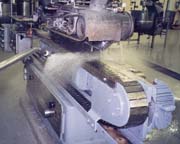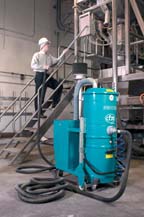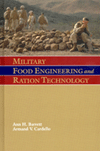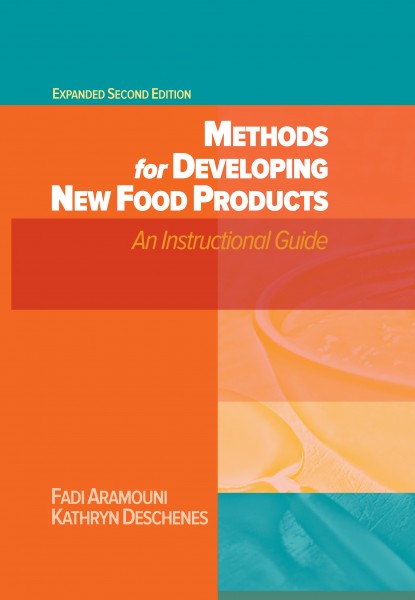
Ozone-enriched water is a case in point. The antimicrobial efficacy of ozonated water is established, and the FDA gave its blessing two years ago to ozone in direct contact with food. Still, there are limits to ozone’s use, and many processors are reluctant to deploy it because of the corrosive effect of this oxidizing agent and because of lingering concerns about worker safety.
For example, some bottlers of spring water discontinued use of ozonated water as a rinsing agent because free radicals in the water can combine with minerals in the water to form carcinogenic compounds. And despite proponents’ comparison of ozone’s smell to that of a spring rain, users say the odor is closer to that of a photocopy machine working in overdrive.
Still, early adapters of the technology give favorable reviews to ozone as a surface sanitizer. Wine vintners are taking the lead in bridging the gap between agricultural applications and mainstream food processing. Suppliers such as Del Ozone in San Luis Obispo, Calif., and Air Liquide America Corp., Countryside, Ill., are organizing business units to cater to the emerging market with inline units and mobile surface-sanitation systems.
Del’s Matt Lowe cites the case of an unnamed user who eliminated chemical sanitizers and slashed water usage from 15,000 to 6,000 gallons a day after switching to ozone. ROI was achieved in six months, according to Lowe. He says other users are combining sanitizing and rinsing steps in the standard clean-rinse-sanitize-rinse progression, thereby reducing water costs and disposal fees.
Robert Hall, production manager at Bronco Winery in Ceres, Calif., hasn’t truncated his sanitizing cycle since adding ozone to his arsenal two years ago, but he gives good reviews to the sanitizer’s performance. “There was a bit of hysteria when ozone was introduced because of the unknown,” he recalls. “It will concentrate in corners of a building, so you have to put in fans to move the air around. But ozone is an effective kill step, and once you’ve bought the generator, it’s basically free.” Hall recently incorporated ozone in the winery’s CIP system.
Any soft metals have to be protected from ozone spray, and Hall takes care to avoid silicone seals and other materials that are easily degraded by contact with silicone. “We still alternate between ozone and a light caustic cleaner, and I make sure parts and equipment suppliers know we use ozone,” he says. But there haven’t been any major issues, and ozone is proving to be an effective sanitizing agent.

Ask the experts
Ozone washdowns have become standard in fish processing facilities as a salmonella kill step, according to Guy DeVicentis, St. Louis-based technical support representative for Aramark ServiceMaster. But while in-process safety interventions are increasing, sanitation procedures are deteriorating, and many plant managers are oblivious to the situation, he maintains.“Plants focus on daily duties like cleaning between changeovers and taking out the trash, and at the end of the day they clean the equipment, says DeVicentis, a former sanitation manager for Interstate Bakeries Co. “But even if they do a great job on the equipment, they don’t clean the floors and walls around it. The people with the trained eyes have either retired or died, and a lot of the people working in the food industry now don’t know what clean is.”
Instead of swimming against the current, food companies increasingly are outsourcing the sanitation function to firms like Aramark, he adds. Snack food processors in particular are turning over the scheduling and verification responsibilities to outside experts.
Indiscriminate use of water for washdown can be counterproductive to the goals of sanitation. Russ Seery, business development manager of Malvern, Pa.-based Nilfisk-Advance America, advocates greater use of dry cleaning procedures, particularly when airborne disease poses a potential hazard.
Seery’s firm makes industrial vacuums. The company has carved out a niche among European processors, including those dealing with powders. Static lift is an important aspect of Nilfisk’s vacuums—some have enough suction to lift a column of water 200 feet, Seery says—but more important is the filtration technology involved. Many food and pharmaceutical manufacturers opt for vacuums equipped with HEPA (high efficiency particulate air) filters capable of trapping particles as small as 0.3 microns, he says. For the more fastidious, ULPA (ultra low penetration air) filters that stop anything larger than 0.12 microns thick are available.
Sanitary problems continue to be created by equipment specification lapses, despite years of emphasis on sanitary design. The situation isn’t limited to small manufacturers; some of the biggest names in the industry are faced with costly retrofits every year because technical aspects in a RFP were overlooked.
For example, 300 series stainless steel is required in a heavy washdown environment to prevent corrosion. That grade is more expensive than 400 series stainless and can’t be hardened to the same degree. Each has a use in specific applications, but when used inappropriately in bearings and other moving parts, the results can be disastrous. “It can become a very costly proposition, very quickly,” says Mark D. McElhinny, business manager for the food and beverage industry at Rockwell Automation’s power systems division in Greenville, S.C.

Feel the heat
Thermal treatment as a pest eradication tactic has been around for years, though the application is primarily in grain storage. With a worldwide ban on the use of methyl bromide looming, food processors are taking a closer look at this sanitation option.“Europeans have used heat for quite a long time, but it hasn’t been used heavily in the U.S.,” notes Frank Meek, technical service manager for Orkin Pest Control in Atlanta. “There are food companies that will hold on to methyl bromide and give it one last shot on Dec. 31, 2004, but after that, they’ll have to switch to heat or one of the new fumigants, which are more costly.”
With heat, temperatures are gradually raised in a room, a cordoned-off area or an entire building to about 130˚ F, then held there for a few hours before gradual cool-down. The heat dehydrates insects in all four stages of life: egg, larvae, pupae and adult. Soluble proteins are dissolved, key enzymes are destroyed, and the only possibility of reinfestation is with the arrival of reinforcements from outside the treated area.
Heat penetrates where chemicals can’t, lengthening the period between treatments. In a food plant, concern about chemical residue can make heat the only option. Nestle Canada applied heat to its C&M chocolate molding plant in downtown Toronto in January 2002. More than a year later, there was no evidence the little nasties had returned, at least to the processing area.
The area treated in the confectionery plant was an upper return plenum, approximately 7 ft. wide and running the length of the building, approximately 200 ft. The plenum automatically returns molds from the end of the production line to the beginning, and the proximity to product ruled out chemicals. The project took 10 hours, according to Walter McWilliams, corporate hygienist, including equipment setup, tarping off the area, heating the plenum and disassembling the equipment. Safety concerns are minimal, and no regulatory notifications are necessary.
Quaker Oats took a leadership position in designing food plants for heat treatment, and the concept is slowly spreading. For most processors, investments in older facilities preclude the possibility of incorporating this solution into the infrastructure. McWilliams relied on PCO Services, Orkin’s Canadian subsidiary, to execute the project. Thermal couples and probes were set up in strategic locations to verify all surfaces were raised to 43˚-45˚ C. If any cold spots exist, bugs will run to them and survive.
Before undertaking a heat treatment, McWilliams cautions plant engineers “to make it heat friendly” first. PLCs and other electronic equipment could be subject to damage, “so you definitely want the engineers to go through and make sure everything will be unaffected,” he counsels.
For more information:
Guy DeVicentis, Aramark ServiceMaster, 800-333-6678, ext. 4383. Write in 409
Matt Lowe, DEL Ozone, mlowe@delozone.com. Write in 414
Russ Seery, Nilfisk Advance, 610-506-6767. Write in 410
Frank Meek, Orkin Pest Control, 404-713-3774. Write in 411
Mark McElhinny, Rockwell Automation, 864-284-5490, mdmcelhinny@powersystems.rockwell.com. Write in 412



